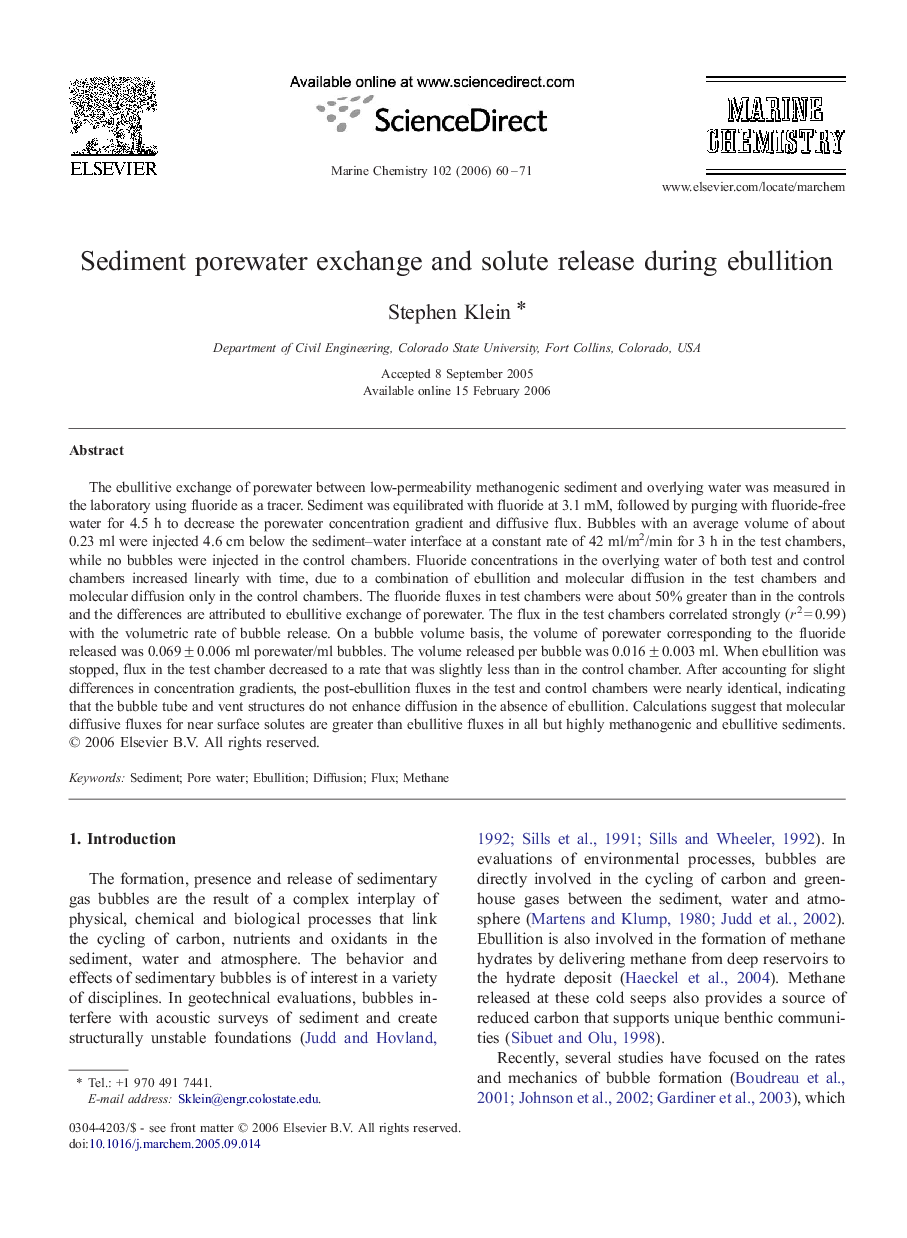| Article ID | Journal | Published Year | Pages | File Type |
|---|---|---|---|---|
| 1262647 | Marine Chemistry | 2006 | 12 Pages |
Abstract
The ebullitive exchange of porewater between low-permeability methanogenic sediment and overlying water was measured in the laboratory using fluoride as a tracer. Sediment was equilibrated with fluoride at 3.1 mM, followed by purging with fluoride-free water for 4.5 h to decrease the porewater concentration gradient and diffusive flux. Bubbles with an average volume of about 0.23 ml were injected 4.6 cm below the sediment-water interface at a constant rate of 42 ml/m2/min for 3 h in the test chambers, while no bubbles were injected in the control chambers. Fluoride concentrations in the overlying water of both test and control chambers increased linearly with time, due to a combination of ebullition and molecular diffusion in the test chambers and molecular diffusion only in the control chambers. The fluoride fluxes in test chambers were about 50% greater than in the controls and the differences are attributed to ebullitive exchange of porewater. The flux in the test chambers correlated strongly (r2 = 0.99) with the volumetric rate of bubble release. On a bubble volume basis, the volume of porewater corresponding to the fluoride released was 0.069 ± 0.006 ml porewater/ml bubbles. The volume released per bubble was 0.016 ± 0.003 ml. When ebullition was stopped, flux in the test chamber decreased to a rate that was slightly less than in the control chamber. After accounting for slight differences in concentration gradients, the post-ebullition fluxes in the test and control chambers were nearly identical, indicating that the bubble tube and vent structures do not enhance diffusion in the absence of ebullition. Calculations suggest that molecular diffusive fluxes for near surface solutes are greater than ebullitive fluxes in all but highly methanogenic and ebullitive sediments.
Related Topics
Physical Sciences and Engineering
Chemistry
Chemistry (General)
Authors
Stephen Klein,
